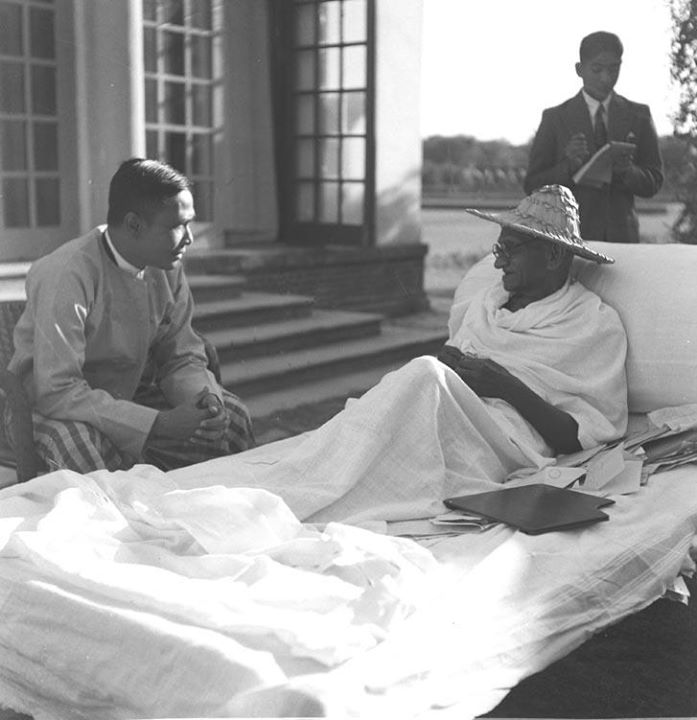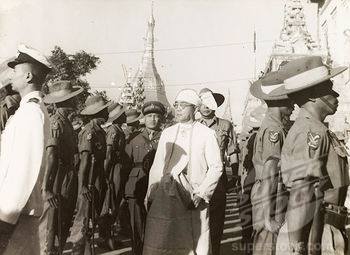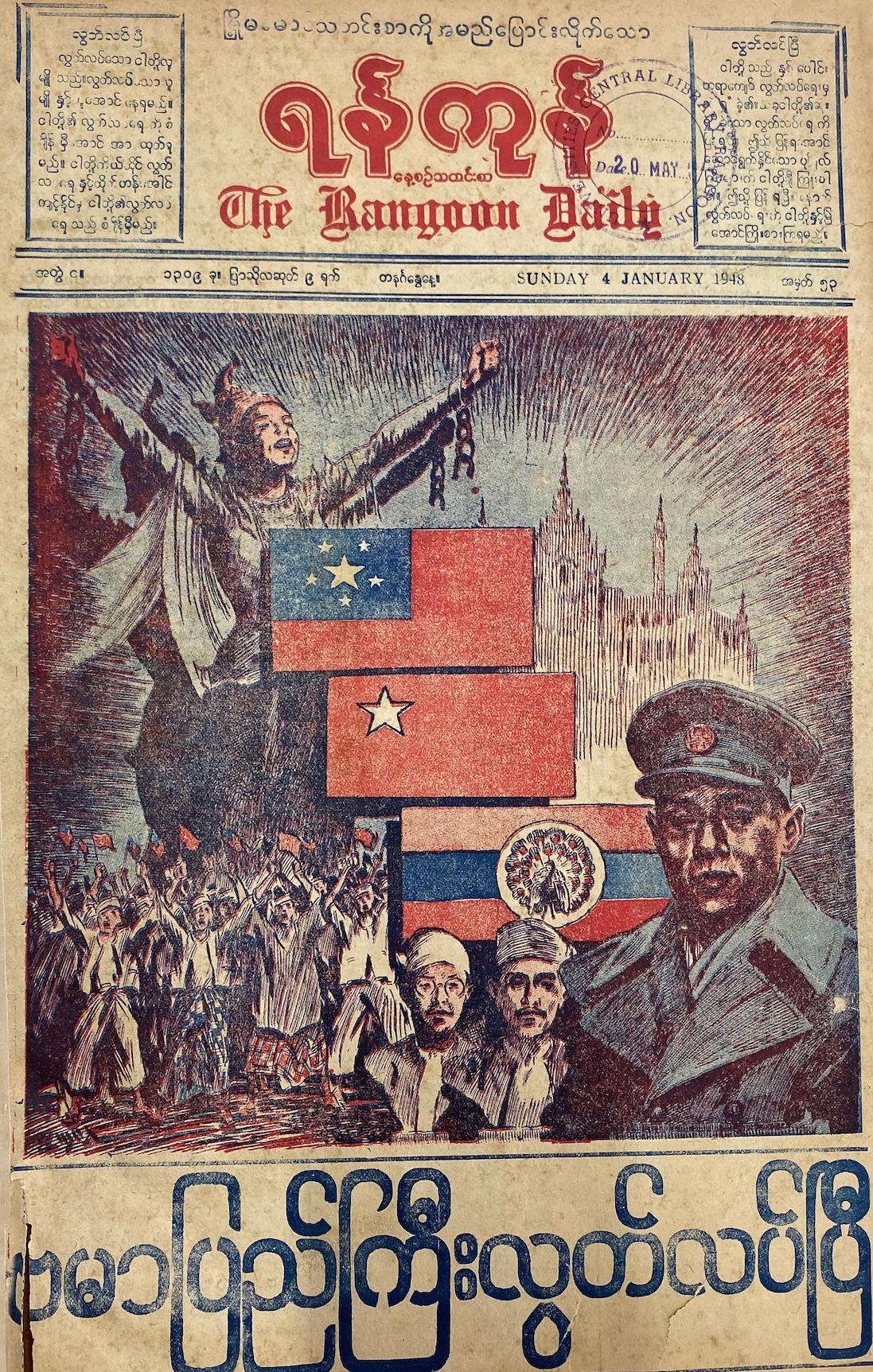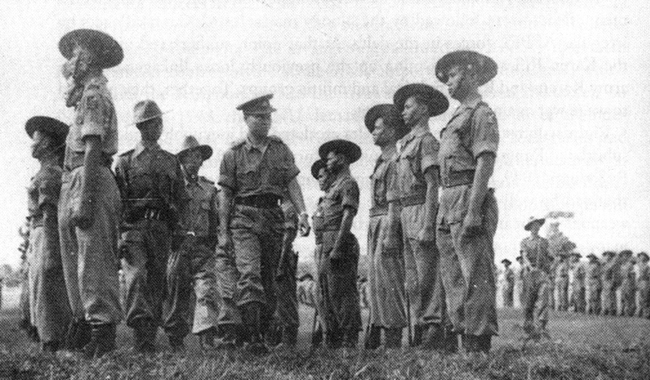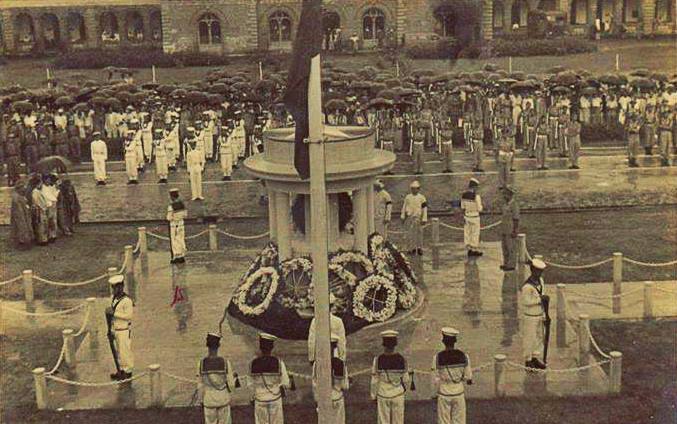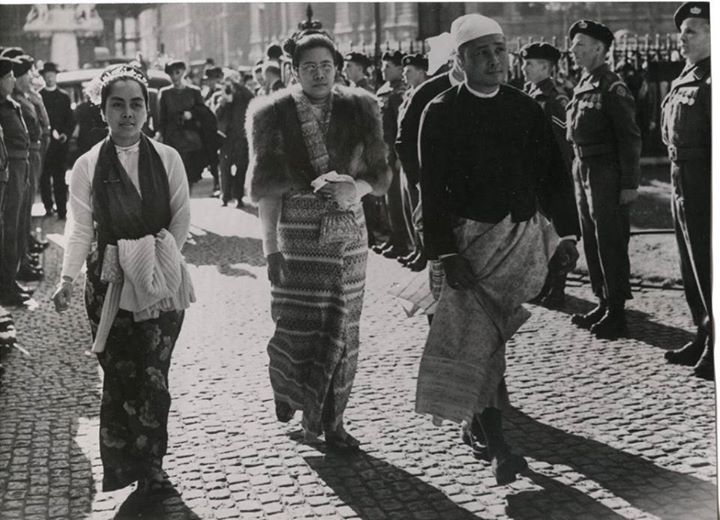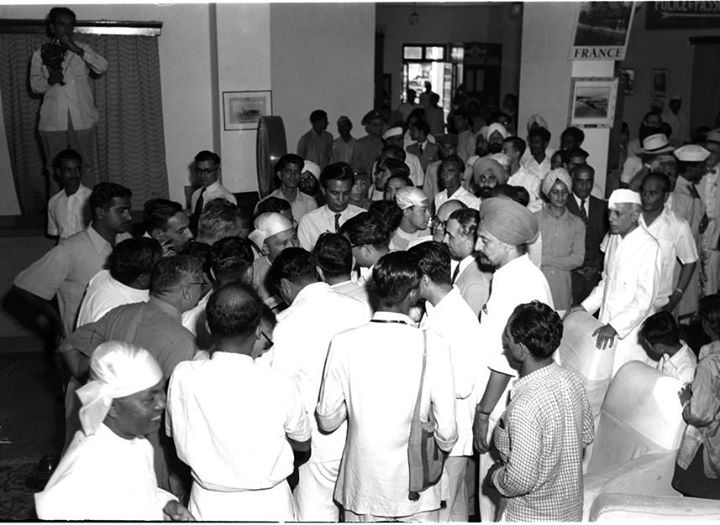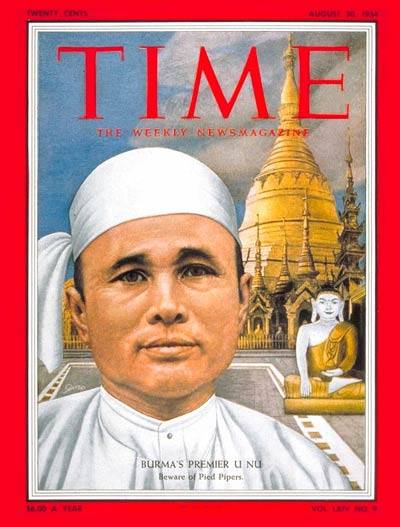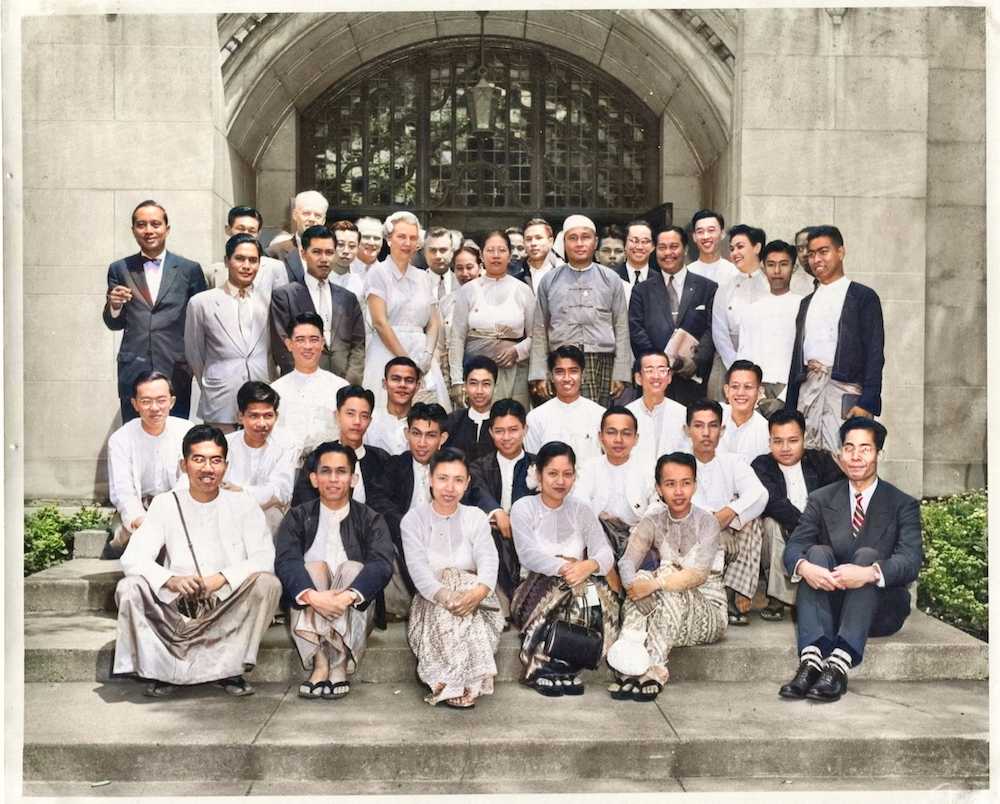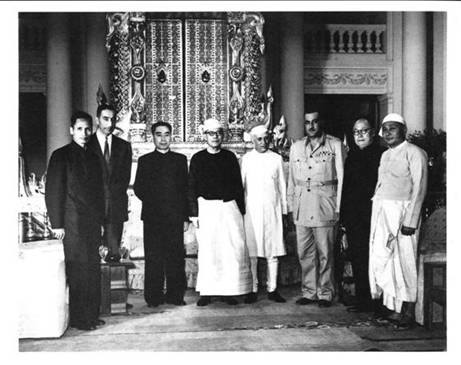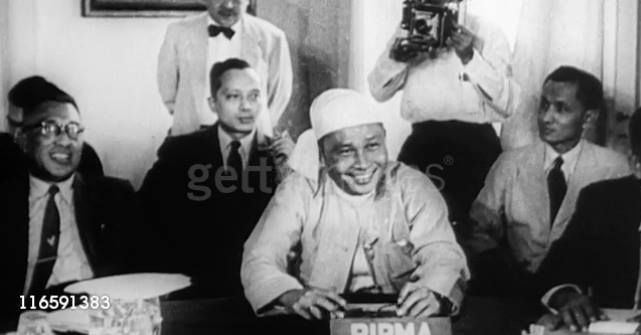U Nu
U Nu with Gandhi in Delhi 1947
The struggle against British colonialism is a shared history of Burma and India. Mahatma Gandhi visited Rangoon three times: in 1902, 1915, and 1929. He had a big impact on Myanmar politics and Myanmar had an important impact on him. Gandhi wrote about how these trips influenced his thinking, on colonialism, and on the role of women. His close friend and patron since student days in London was Dr. Mehta who lived on Mughal Street and later Shwedagon Pagoda Road. ...
Read MoreThe 1948 Government of Burma was genuinely multi-ethnic
This photograph, taken in August 1948, shows the first President of independent Burma, Sao Shwe Thaik and Army Chief General Smith Dun inspecting troops in front of the Rangoon Corporation building after the declaration of martial law. The communist ("White Flag" and "Red Flag") People's Volunteer Organization and Mujahideen insurrections were in full swing. Karen, Kachin, and Chin battalions were fighting Burmese communist and PVO militias up and down the Irrawaddy valley. It was also a time (the only time)...
Read MoreMyth of Burma Independence
On 4 January 1948, at 4:20 am, Burma became an independent republic outside the British Commonwealth. The Union Jack was lowered for the final time at Government House in Rangoon and the last Governor Sir Hubert Rance formally handed over power to the Union of Burma's first president the Saopha of Yawnghwe, Sao Shwe Thaik. There is a myth that Burma at independence had all the attributes of a country fated for prosperity. But the country in January 1948 was actually...
Read MoreLongest on-going civil war
The Burmese civil war is the longest-running armed conflict in the world and has continued, in one form or another, from independence to the present day. In a way Burma is a place where World War Two never really stopped. Ever since the first Japanese bombers hummed overhead and dropped their payloads over downtown Rangoon, the country has not known peace. For a brief period, between August 1945 and independence in January 1948, there were no open hostilities. And since...
Read MoreMartyr's Day 1949: Civil War Raging, Economy in Ruins, Government Promises 'Peace Within a Year'
Martyr's Day is held annually to commemorate General Aung San and the other martyrs who were assassinated on that day in 1947. This picture shows the commemoration in 1949, which was held at the Secretariat. Burma was then at the height of its civil war, with much of the country in the hands of the communists, the Karen National Defence Organisation, the Mujahedeen, the People's Volunteer Organization, and dozens of other militia groups. The Karens held Insein and the communists...
Read MorePrime Minister U Nu, Daw Mya Yee and Daw Khin Kyi in England 1950
On U Nu's visit to England in 1950, he tried hard to paint as rosy a picture as possible of the situation in Burma. He said peace was likely "within a year" and encouraged British aid and investment. An article published in the UK's Spectator magazine on 26 May 1950, however, painted challenged his optimism: "For some generations it has been customary to speak of the ingrained pessimism of the East, and to contrast it with the active hopefulness of...
Read MoreReciprocal State Visits of Myanmar and Indian Leaders
Indian Prime Minister Manmohan Singh's visit to Myanmar in 2012 was one of the dozens of visits between Indian and Myanmar heads of government and state to each other's countries since both countries became independent. These photographs were taken during Burmese Prime Minister U Nu's visit to India in 1951. The first image shows Pandit Nehru (right of centre, all in white) at Palam Airport (now Indira Gandhi International Airport), Delhi to greet U Nu (left of centre wearing a...
Read MoreU Nu’s visit to China in 1954
Despite the many ups and downs of Sino-Myanmar relations in modern times (including Beijing-backed the communist invasion of 1967), all Myanmar leaders since independence have made several visits to the country's giant eastern neighbour. This photograph shows U Nu with Mao Zedong during U Nu's first trip to China in December 1954. The Prime Minister's party included U Thant, Colonel Aung Kyi, U Myint Thein, and U Win Pe. Chairman Mao was likely surprised by U Nu's frankness on many...
Read MoreU Nu on the cover of Time Magazine
The cover of Time Magazine published on 18 August 1954. U Nu's warning (at the bottom of the cover) - "Beware of Pied Pipers" is perhaps as apt today as in 1954.
Read MorePrime Minister U Nu’s visit to the United States
Prime Minister U Nu made an official visit to the United States and spent more than three weeks there, from 24 June to 16 July 1955. The tour included Washington D.C., New York, Ann Arbor (Michigan University), Knoxville (Tennessee), San Francisco, Los Angeles, and the Grand Canyon (Arizona). He was accompanied by his wife, Daw Mya Yi, U Thant (then Secretary, Prime Minister's Office), and Colonel Lwin (later head of Military Intelligence) as well as Burma's Ambassador to the US...
Read MoreOn the Way to the 1955 Bandung Conference
The April 1955 Bandung meetings were a testament to Burma's then dynamic international diplomacy. They were also a testament to Mingaladon airport's position as an international aviation hub - everyone had to stop in Rangoon anyway to travel to Indonesia. Many of the leaders attending Bandung stopped in Rangoon and were treated to dinner at Government House by President Dr Ba U. The Bandung Conference was a meeting of 29 Asian and African nations held in Bandung, Indonesia. Its aim...
Read MoreDuring the Heyday of Burmese Diplomacy
Prime Minister U Nu at the Bandung Conference with Justice U Myint Thein (left) and U Thant (back). Burma was one of the organizers of the Bandung Conference of newly independent Asian and African states, together with India, Indonesia, Pakistan, and Ceylon. The conference was a big step towards the creation of the Non-Aligned Movement. Video here: http://www.gettyimages.no/detail/video/representatives-of-thirty-nations-from-african-and-asia-news-footage/116591383
Read More